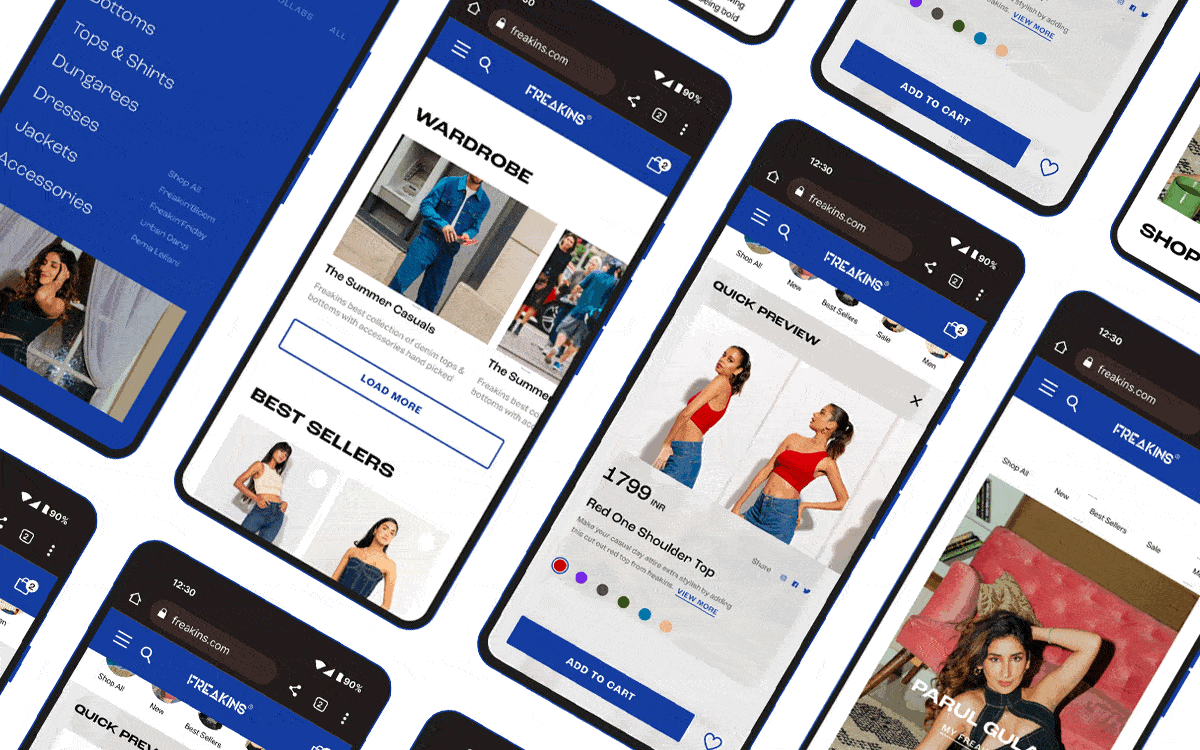In the vast digital landscape where attention spans are fleeting and competition is fierce, the success of any product or service hinges on the seamless fusion of User Interface (UI) and User Experience (UX) design. These two pillars form the bedrock upon which user engagement, satisfaction, and loyalty are built. In this blog, we delve into the intricate world of UI and UX design, unraveling their significance and exploring the profound impact that top UI/UX design agencies wield on the success of digital ventures.

UI and UX, often used interchangeably, are distinct yet intertwined concepts. UI design is the visual and interactive aspect that users directly engage with, encompassing elements like buttons, icons, and color schemes. On the other hand, UX design delves into the broader user journey, focusing on the overall experience from the moment a user lands on a platform to the moment they complete a desired action.
Think of UI as the beautiful exterior of a house, with UX being the thoughtful architecture that ensures every room is accessible, comfortable, and serves its purpose seamlessly. Together, they create a harmonious symphony that captivates and retains users.
Related: Dark Mode UI Design: Tips And Tricks
In the digital realm, first impressions are instantaneous. Users form opinions about a website or application within seconds of interacting with its UI. A visually appealing and intuitive UI captures attention, creating a positive initial experience. Colours, typography, and layout are the paintbrushes that designers use to create a masterpiece that not only looks good but guides users effortlessly.
Take a moment to consider your favourite apps or websites. Chances are, their UI design played a pivotal role in making you feel comfortable and engaged. Whether it’s the sleek simplicity of a social media platform or the vibrant colors of a productivity app, UI design shapes our perceptions and influences our willingness to explore further.
India is home to a vibrant and rapidly growing UI/UX design industry, with agencies that blend creativity, technology, and user-centered strategies to craft exceptional digital experiences. Here’s a closer look at the leading agencies that have made their mark in the design world, delivering everything from captivating visuals to intuitive user journeys.

Brandemic is at the forefront of UI/UX design, merging creative storytelling with functional design to help brands connect with users on an emotional level. Specializing in merging branding with digital design, Brandemic ensures every interface tells a compelling story while offering seamless usability. Their designs are not just visually stunning; they align with the brand’s core values, delivering solutions that resonate with users and leave a lasting impact.
Notable Work: From startups looking to establish a strong digital identity to legacy brands aiming to refresh their presence, Brandemic’s portfolio spans industries and showcases versatility.
Why Choose Them?
Brandemic doesn’t just design interfaces; they craft experiences that feel intuitive, purposeful, and human-centered. Their focus on storytelling sets them apart, ensuring that every interaction strengthens the emotional bond between the brand and its users.
Lollypop Design Studio has carved a niche for itself as one of India’s most prominent design agencies. Known for their clean, impactful designs, Lollypop focuses on creating delightful experiences that seamlessly blend creativity and usability, ensuring that every user interaction feels natural.
Specialization: Mobile app designs and website revamps.
USP: Their user-first philosophy places user needs at the core of their design process, making every design both intuitive and engaging.
Think Design is synonymous with human-centered design, a principle that guides their design philosophy. Their research-driven approach ensures that every design is grounded in real user needs, which has earned them the trust of both startups and Fortune 500 companies alike.
Services: UX research, strategy, and interface design.
Toobler stands out for its ability to blend cutting-edge design with business strategy. The agency excels in crafting solutions that bridge the gap between user expectations and business objectives. Their collaborative approach ensures that every project is customized to the client’s unique needs.
Specialization: Cross-platform designs for apps and enterprise software.
Why Choose Them?
With a focus on seamless user experiences across platforms, Toobler’s designs are adaptable, ensuring a consistent user experience whether on mobile, web, or enterprise software.
F1Studioz has gained a reputation for its forward-thinking designs, especially in the tech startup space. By staying ahead of design trends like AR and AI, F1Studioz is always ready to offer future-proof solutions that stand the test of time.
Notable Work: SaaS platform designs that simplify complex workflows.
USP: Their ability to incorporate emerging technologies into their designs ensures their work remains cutting-edge and relevant.
Rillusion’s approach goes beyond just design- they focus on creating emotional connections with users. By blending imagination with strategy, Rillusion crafts memorable digital experiences that leave lasting impressions.
Services: Brand strategy, UI/UX design, and front-end development.
Why Choose Them?
If you’re looking for designs that tell a story and resonate deeply with your audience, Rillusion is an excellent choice.
Creative, vibrant, and functional- Yellowchalk brings a burst of energy to every project they touch. They are the go-to agency for startups that want to make an impactful first impression with their digital presence.
Specialization: Responsive designs optimized for mobile-first users.
Notable Clients: Global startups and mid-sized enterprises looking for dynamic, user-friendly designs.
Pixlogix is known for its minimalist approach to design, focusing on clarity, simplicity, and functionality. Their designs are not just visually appealing- they’re intuitive and accessible, ensuring that every user enjoys a seamless experience.
Specialization: Web and mobile app designs.
USP: Pixlogix’s commitment to simplicity and functionality ensures that their designs are not only beautiful but also effective and user-friendly.
A rising star in the UI/UX design space, Brandshark combines strategic thinking with creative design to deliver solutions that drive results. They specialize in working with e-commerce and SaaS companies to revamp their digital presence.
Notable Projects: Website overhauls for e-commerce brands and SaaS companies.
Why Choose Them?
Their comprehensive approach, which includes both branding and design, ensures that every project is cohesive and aligned with the client’s overall business strategy.
WinkTales excels in the art of storytelling through design. Their unique approach integrates branding, UX research, and visual design to create experiences that are not only functional but also meaningful and emotionally engaging.
Services: UX research, visual design, and branding.
USP: By merging design with storytelling, WinkTales crafts experiences that captivate and connect with users on a deeper level.
Selecting the perfect UI/UX partner is critical to ensuring your digital product’s success. Here’s a deeper dive into the factors to evaluate when making your decision:
Look beyond pretty designs; examine how the agency’s past projects have solved problems or improved user experiences. A strong portfolio should include:
A good agency doesn’t just deliver designs; they follow a structured process to ensure the product aligns with your vision and user needs. Key stages to look for include:
Some agencies specialize in particular industries or design philosophies. For example, if you’re building a SaaS platform, agencies with experience in simplifying complex workflows will bring invaluable insights. Evaluate whether the agency’s expertise matches your unique challenges.
Understand who will be working on your project. Great UI/UX design demands a mix of skills, including user research, interaction design, visual design, and front-end development. Ask about:
Design projects thrive on collaboration. Choose a team that aligns with your working style, understands your brand values, and communicates clearly. Consider:
Past client reviews and case studies reveal how well an agency delivers on promises. Look for insights into:
Don’t just choose the cheapest option. Assess the agency’s value by considering their long-term impact on your business. A slightly higher upfront cost can pay off if the designs lead to increased user satisfaction, better retention, and higher ROI.
In the competitive digital landscape, exceptional UI/UX design is no longer optional- it’s a cornerstone of business success. Whether you’re a startup crafting your first app or an established company revamping your online presence, choosing the right design agency can make all the difference.
Ultimately, the best agency for you is one that understands your vision, prioritizes your users, and delivers designs that drive measurable results. With this guide and list of leading agencies, you’re now equipped to make an informed decision and take the next step toward creating a standout digital product.
UI (User Interface) design focuses on the visual and interactive aspects of a product, such as layouts, colors, typography, and button placements. UX (User Experience) design is about the overall journey and experience a user has with a product, emphasizing user research, functionality, and satisfaction. Together, they ensure a product is both beautiful and usable.
UI/UX design directly impacts user engagement, satisfaction, and retention. A well-designed interface ensures users can easily navigate and achieve their goals, while a seamless user experience builds trust and loyalty. For businesses, good design can significantly boost conversions, customer satisfaction, and brand perception.
Popular tools include:
This site is protected by reCAPTCHA and the Google Privacy Policy and Terms of Service apply.